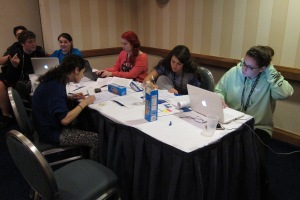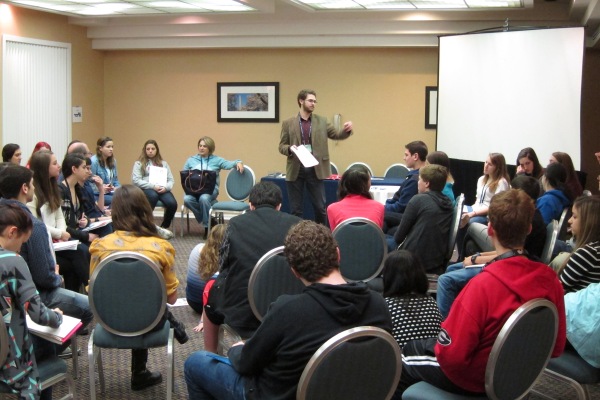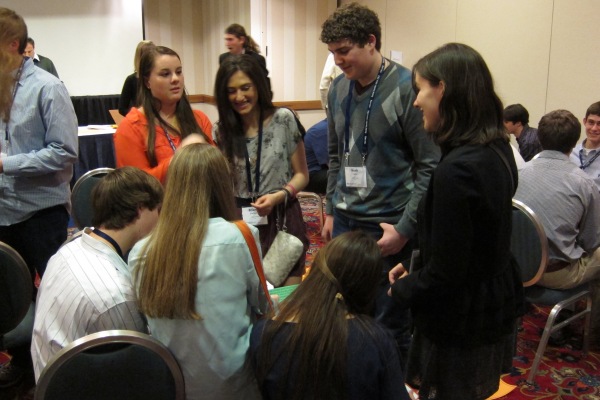Israelis went to the polls on January 22. In this and a following post I will attempt to make a few initial conclusions about the somewhat surprising results.
Most of the commentary and analysis leading up to the elections suggested a rather handy victory, for Prime Minister Binyamin Netanyahu and for the right-wing, religious and nationalist parties. It did not turn out that way. The coalition of Netanyahu’s Likud party and the nationalist and mostly Russian bloc, Yisrael Beiteinu [“Israel is our house”], which controlled 42 seats in the last Knesset, was reduced to 31. Since this single list garnered the most votes – the next largest faction is a brand new list called Yesh ‘Atid [“There is a future”] with 19 seats – Netanyahu will almost certainly put together the next government. It will probably be weak and short-lived.
How Israeli Elections Work
Before proceeding with my observations, let me describe briefly the Israeli electoral system, since it is radically different from the American system.
First, and most important, there are no representative districts in Israel. The contest for seats in the 120-member Knesset is decided by proportional allocation of contesting parties. On election day, voters receive a ballot that presents all the parties running. (By-the-way, there is no early or absentee voting. Eligible voters must be present in the country, on active duty in military units, or serving on embassy or consular staffs. If you are traveling, you cannot vote. Thus, it takes only a day or so to get the complete final tally.) Voters then mark one party. There are no individual names on the ballot.
If a party achieves a minimum threshold – 2% of the total – it is eligible to have a representative in the Knesset. On last Tuesday’s election, 13 of the roughly 30 parties on the ballot met the threshold. Likud-Beiteinu received slightly over one-quarter of the total. The actual individuals who will be sitting in the Knesset is determined within each party, usually through the vehicle of a party convention or caucus. At that time, the party creates a numbered list, 1 through potentially 120. If a party merited, say 12 seats (10% of the vote), the first 12 on their list would then become members of Knesset (MKs).
Once the election is over, the system is similar to Canada or Great Britain’s Parliament. If no single party commands a majority of the Knesset seats, a working government must be created out of forming a coalition of parties. The Knesset itself is both the legislative and executive authority of the nation. Thus, MKs hold all the ministry positions (akin to the Cabinet in the United States), as well as that of chief executive, Prime Minister. The head of the dominant party is usually Prime Miinister, and he (there was one ‘she’ in Israel’s history: Golda Meir) then parcels out ministry posts (usually called ‘portfolios’) to leaders of other parties, until a ruling government commanding at least 61 votes has been formed.
This government can rule for four years, unless: 1) the Prime Minister decides to call an early election, usually done when he believes he and his party are particularly popular, or 2) there is a successful vote of no-confidence – which tends to happen when one or more parties in the government decide to defect – causing a ‘constitutional crisis’ which requires a new election.
Two Newcomers
It will be a number of weeks from now before a new government is formed. I can nevertheless make a few firm – and a few somewhat less firm – conclusions from the election itself.
First, Netanyahu – who is now Israel’s second longest serving Prime Minister (after David ben Gurion) – is simply not popular. He is certainly liked and respected among a certain portion of the electorate, but he clearly does not elicit much passion. Even more to the point, the record of the last four years has been decidedly ambiguous. Nothing particularly bad happened, but nothing especially good occurred either. My sense is that an American style poll of Israelis on the topic of whether the country is heading in the right direction, would reveal a rather low positive response.
Netanyahu’s “victory” was much more a matter of the inability of the established political leaders of other parties to create much enthusiasm for themselves. Clearly, the two individuals who produced the greatest amount of passion were two newcomers: the secular-centrist Ya’ir Lapid and religious-nationalist Naftali Bennet. Their personal successes are intriguing and instructive.
Lapid has been a well-known TV personality. His father was also a media star who led his own party to short-term success a little over a decade ago. Ya’ir is ideologically similar to his father, but has chosen to steer a less stridently anti-Orthodox path. The 19 seats he now commands arose out of two currents in the public mood. One is a sense of injustice within the social fabric of the society, particularly with respect to the ultra-Orthodox population who receive a very large portion of the state benefits and broadly shirk the responsibility of military duty. The second is a mood of suspicion and dissatisfaction with all the established parties and their representatives. No one on the Yesh ‘Atid list has ever been in the Knesset before.
The American-born Bennet (he came to Israel as a child), on the other hand, reorganized and rebranded an old established party, the National Religious Party, whose roots go back into the earliest years of the Zionist Movement. The party, moderate and pragmatically Orthodox, had once been a fixed feature in governing coalitions from the time of the founding of the State. Over the past two decades, however, the NRP transformed somewhat into the chief representative of religious nationalists, the settlers’ movement, whose principal concern has been preserving West Bank lands that have been acquired by Israelis, and annexing them into the Jewish State.
The party’s fortunes have been negatively affected by inroads on the part of the untra-Orthodox among the moderate Orthodox, and by the nationalist-annexationist tendencies of other parties, particularly Likud. By 2009, the NRP had been reduced to 3 seats. The prospects for 2013 initially appeared to be even worse, as Likud combined with the equally nationalist Beiteinu party, and also purged some its own more pragmatic members from the top of their list. Netanyahu appeared to be preparing to swallow the NRP whole. Clearly, this did not happen. Bennet, a software entrepreneur and multi-millionaire, renamed the party Bayit Yehudi [Jewish Home], gave it some vigor, and drew from the same anti-establishment mood that propelled Yair Lapid to significance.
Yesh ‘Atid and Bayit Yehudi combined for 31 seats, equal to that of Likud-Beiteinu. Although dramatically different in outlooks, the success of the two does reflect that a significant portion of the voters want something new.












 The students chose their own topics from among the many they’d been introduced to over the weekend: gun safety, LGBT rights, stem-cell research, etc. And some students worked together. So there was partial overlap among the issues that they had prepared, but we didn’t want to present the same issue twice in front of the same person, and we didn’t have time for more than three presentations. Additionally, we were not the only congregation in New York State, so the Senate presentations required additional coordination.
The students chose their own topics from among the many they’d been introduced to over the weekend: gun safety, LGBT rights, stem-cell research, etc. And some students worked together. So there was partial overlap among the issues that they had prepared, but we didn’t want to present the same issue twice in front of the same person, and we didn’t have time for more than three presentations. Additionally, we were not the only congregation in New York State, so the Senate presentations required additional coordination.




















